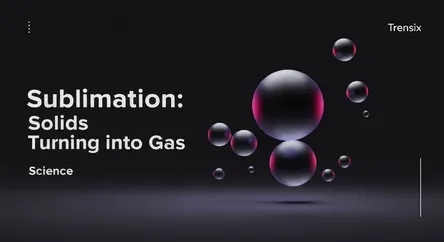Science
Sublimation: Solids Turning into Gas

Explore sublimation, the unique process where a solid turns directly into a gas, and its growing applications in printing, food, and technology.
What is it?
Sublimation is a phase transition where a substance changes directly from a solid to a gas, bypassing the intermediate liquid phase. This endothermic process occurs at specific temperatures and pressures below a substance's triple point. A common example is dry ice, which is solid carbon dioxide. At room temperature and standard atmospheric pressure, dry ice turns directly into carbon dioxide gas, creating a fog effect. Another example is freezer burn, which happens when ice on frozen food sublimates into water vapor. The reverse process, where a gas turns directly into a solid, is called deposition or desublimation.
Why is it trending?
Sublimation is trending due to its increasing use in various technologies, most notably in dye-sublimation printing. This digital printing method uses heat to transfer dye onto materials like polyester fabric, creating vibrant, durable, and full-color designs on items like t-shirts, mugs, and phone cases. The demand for personalized and custom products has fueled the popularity of this technique. Furthermore, innovations in the field are leading to new applications, such as 3D sublimation printing and printing on a wider range of materials. The process is also fundamental to freeze-drying, a method used for preserving food, which is gaining traction for its ability to maintain nutritional value and extend shelf life.
How does it affect people?
Sublimation impacts daily life in numerous ways. Many household products, such as solid air fresheners and mothballs, work by slowly sublimating, releasing their chemicals into the air as a gas. In the food industry, freeze-drying through sublimation is used to create instant coffee and preserve fruits and vegetables for snacks or space missions. The vibrant designs on activewear, banners, and personalized gifts are often the result of dye-sublimation printing. It's also used in chemistry for purifying compounds and has applications in forensics for revealing latent fingerprints.